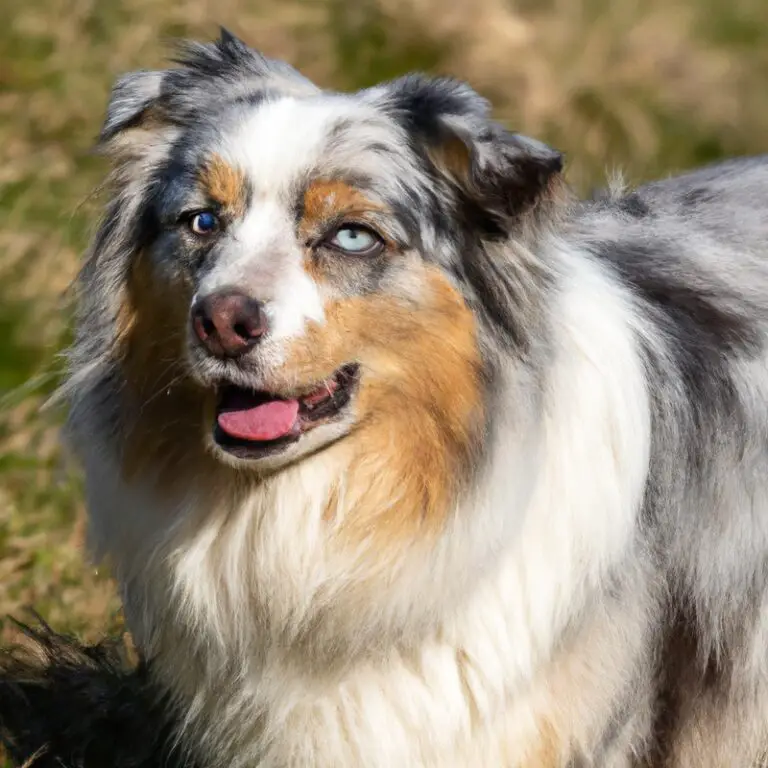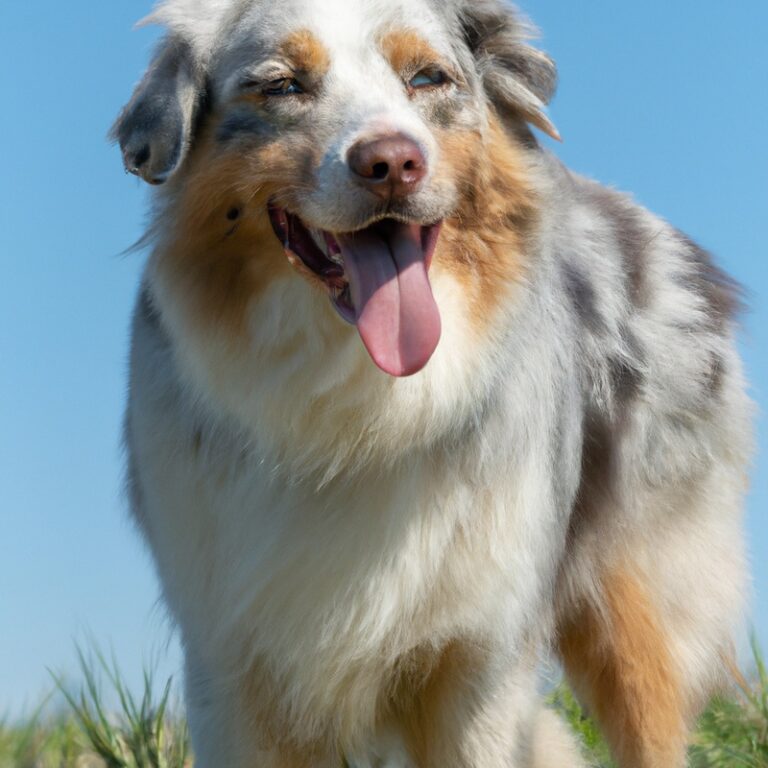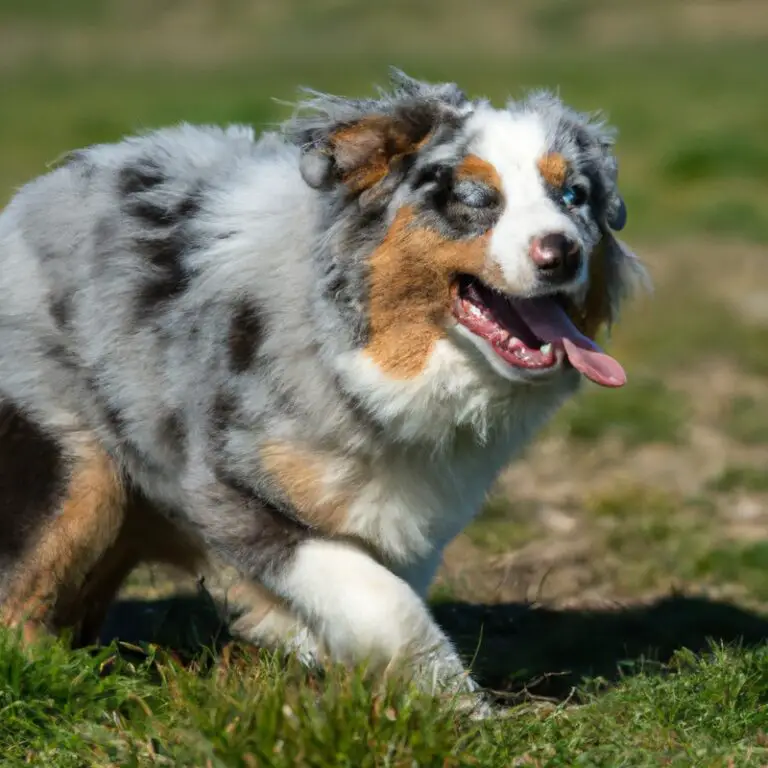What Are The Color Variations In Australian Shepherds?
Key Takeaways:
- Australian Shepherds can come in a wide range of colors and patterns.
- They can have solid, merle, or bicolor coats.
- Popular color variations include blue merle, black, red, and red merle.
Have you ever wondered about the stunning array of colors in Australian Shepherds? From black and red tri to blue and red merle, these dogs come in a wide range of shades that are sure to capture your heart.
But did you know that there are also dilute color variations like blue tri and lilac tri?
And let’s not forget the unique color variations, including sable, brindle, and even white Australian Shepherds! In this blog article, I’ll dive into the genetics and inheritance behind these mesmerizing coat colors, explore common markings and patterns, and discuss the importance of responsible breeding for the health considerations associated with color variations. Get ready to explore the fascinating world of Australian Shepherd colors!
| Color Variation | Description |
|---|---|
| Black | A solid black coat without any other color markings |
| Blue Merle | A grey or silver base color with black patches or speckles |
| Red | A solid red or liver color without any other markings |
| Red Merle | A light brown or reddish base color with patches or speckles of darker red or black |
| Red Tri | A combination of solid red or liver color, white markings, and tan points |
| Black Tri | A combination of solid black, white markings, and tan points |
| Red Bi | A solid red or liver color with minimal white markings |
| Black Bi | A solid black coat with minimal white markings |
Standard Color Patterns
Black or Red Tri
Black or Red Tri refers to Australian Shepherds that have either a black or red base coat with tan points and white markings. Their main body color can be either black or red, while the tan points are usually present on the eyebrows, cheeks, legs, and under the tail.
The white markings may appear on the chest, face, and legs.
Black or Red Tri is one of the standard color patterns in Australian Shepherds and is recognized by breed associations. These color variations give each individual Australian Shepherd a unique and striking appearance.
Blue or Red Merle
Blue or Red Merle is one of the color variations found in Australian Shepherds. These dogs have a unique coat pattern that consists of patches or spots of diluted blue or red color on a white or cream base coat.
The merle gene is responsible for this pattern, which can result in a stunning and eye-catching appearance.
Blue Merle Australian Shepherds have a base coat color that is diluted to a grayish-blue shade, with black patches or spots. This gives them a marbled or mottled appearance.
On the other hand, Red Merle Australian Shepherds have a diluted red or copper base coat color, with patches or spots of darker red or chocolate brown.
The merle pattern can appear in varying degrees of intensity, from a few patches to almost full coverage. This pattern can also affect the color of the dog’s eyes, often resulting in one or both eyes being blue or partially blue.
It’s important to note that breeding two merle Australian Shepherds together can increase the risk of certain health issues, such as blindness and deafness.
Responsible breeders take precautions to minimize these risks and ensure the overall health and well-being of the puppies. Whether you prefer a Blue or Red Merle Australian Shepherd, these dogs are sure to turn heads with their unique and beautiful coat patterns.
Just remember to choose a reputable breeder who prioritizes the health and welfare of their dogs.
Solid Colors
Solid Colors: Australian Shepherds can come in solid colors, which means their fur is one solid shade without any patterns or markings. The most common solid colors in Australian Shepherds are black and red.
These solid colors can come in different shades and variations, ranging from a deep, rich black to a lighter, rusty red.
Solid-colored Australian Shepherds have a sleek and uniform appearance, making them stand out in a crowd. Solid colors are a popular choice among dog owners who prefer a clean and simple look for their Australian Shepherds.
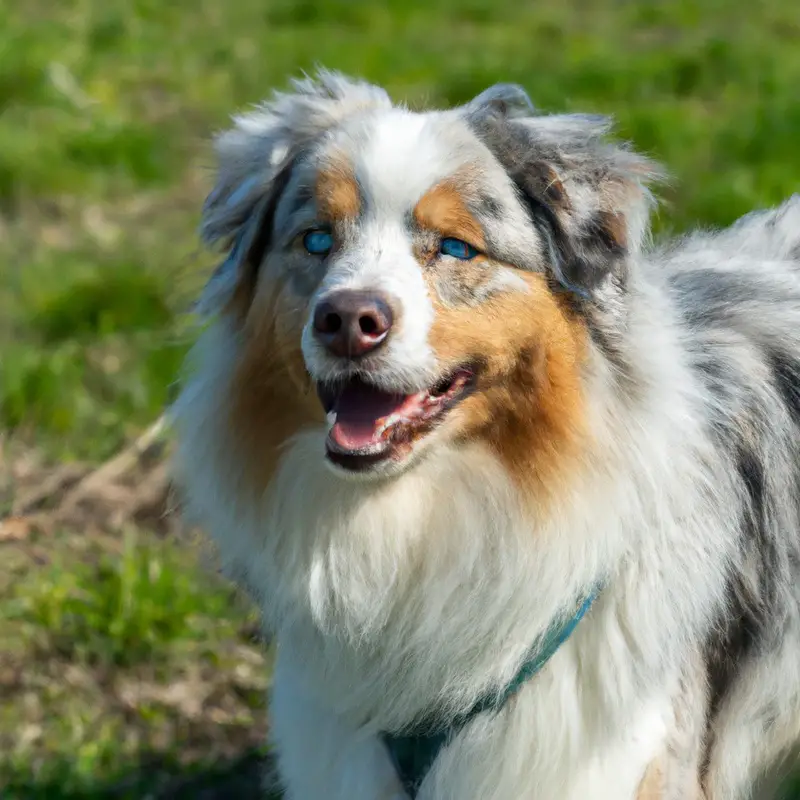
Dilute Color Variations
Blue Tri
Blue Tri is a color variation in Australian Shepherds that is characterized by a blue coat with tan or copper markings. The term “tri” refers to the presence of three colors in the coat – blue, tan, and white.
The blue color in Blue Tri Australian Shepherds is a dilution of black, resulting in a bluish-gray hue.
This dilution is caused by a recessive gene known as the dilute gene, which affects the pigmentation of the coat. The tan or copper markings typically appear on the eyebrows, cheeks, chest, legs, and under the tail.
Blue Tri Australian Shepherds are highly sought after for their striking appearance and unique coloration.
They have a beautiful blue coat that can range from a light gray to a deep steel blue. Their tan or copper markings provide a beautiful contrast against the blue background.
It’s important to note that while Blue Tri Australian Shepherds are visually stunning, color should not be the sole factor in choosing a dog.
Temperament, health, and suitability to your lifestyle should also be taken into consideration when selecting a pet. If you’re interested in getting a Blue Tri Australian Shepherd, it’s recommended to find a reputable breeder who prioritizes the health and well-being of their dogs.
Responsible breeders will conduct health tests and ensure proper care for their puppies.
Overall, Blue Tri Australian Shepherds are a captivating color variation that adds to the unique charm of this breed. Their beautiful blue coat and tan markings make them stand out from the crowd.
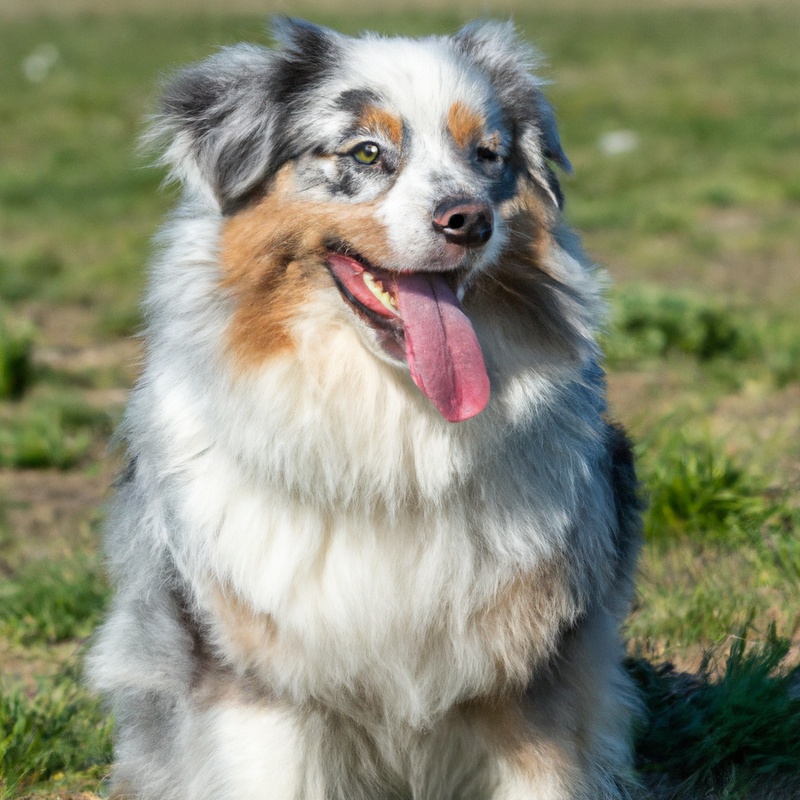
Lilac Tri
Lilac Tri is a unique color variation found in Australian Shepherds. This color pattern is characterized by a pale lavender or silver-gray coat with tan points and white markings.
The term “Tri” refers to the presence of the tan points on the eyebrows, cheeks, chest, and legs.
The dilute gene is responsible for the dilution of the black pigment, resulting in the lilac shade. This color variation is relatively rare and highly sought after by enthusiasts and breeders.
Lilac Tri Australian Shepherds are known for their striking and distinctive appearance.
Red Merle and Red Tri Dilutes
Red Merle and Red Tri Dilutes are two dilute color variations that can be seen in Australian Shepherds. Red Merle is a diluted variation of the merle pattern, which results in a lighter coat color with patches of red, tan, or liver.
The dilution gene affects the distribution of pigments in the fur, giving it a mottled or marbled appearance.
This variation is quite striking and unique. On the other hand, Red Tri Dilutes have a diluted variation of the traditional black or red tri-color pattern.
The dilution gene affects the intensity of the coat color, resulting in a lighter shade of red or liver.
Both of these dilute variations can produce stunning and eye-catching coats in Australian Shepherds. It’s important to note that these color variations are purely cosmetic and do not affect the dog’s health or temperament.
However, it’s crucial to choose a reputable and responsible breeder who prioritizes the health and well-being of their dogs.
Unique Color Variations
White Australian Shepherds
White Australian Shepherds are a unique color variation within the breed. They have a predominantly white coat, with minimal markings or patches in other colors.
While white is not a standard color for Australian Shepherds, it is a natural variation that occurs due to genetics.
White Aussies can have blue or different colored eyes, making them even more striking. It’s important to note that white Australian Shepherds are not albino; they simply have a lighter coat color.
Like all Australian Shepherds, white Aussies are intelligent, loyal, and active dogs.
They make great companions and excel in various dog sports and activities. However, it’s crucial to choose a reputable breeder and ensure that proper health testing and responsible breeding practices are followed to maintain the breed’s overall well-being.
Brindle Australian Shepherds
Brindle Australian Shepherds are a unique color variation within the breed. These dogs have a base coat color with streaks or patches of a darker color, giving them a distinctive brindle pattern.
The base coat color can range from red or black to blue or liver, and the darker streaks or patches can be black, tan, or blue.
The brindle pattern can vary in intensity and distribution, making each Brindle Australian Shepherd truly one-of-a-kind. Brindle is not a common color in Australian Shepherds, which adds to the appeal of these dogs for those looking for something a little different.
It’s important to note that brindle is considered a pattern rather than a solid color.
If you’re considering getting a Brindle Australian Shepherd, it’s essential to find a reputable breeder who has experience with this color variation. They can help ensure that your new furry friend is healthy and well-socialized.
These dogs are known for their intelligence, loyalty, and energetic nature, so be prepared for an active companion who will thrive with plenty of exercise and mental stimulation.
Sable Australian Shepherds
Sable Australian Shepherds have a unique and striking color pattern. Their coat is usually a rich reddish-brown or chocolate color with lighter shades on the chest and legs.
The hairs on their bodies have different shades of brown, which create a sable effect.
This color variation is caused by the expression of the agouti gene in the breed. Sable Australian Shepherds are highly sought after for their beautiful and eye-catching coats.
They are a stunning addition to any family or show ring.
Genetics and Color Inheritance
Basic understanding of coat color inheritance
Coat color inheritance in Australian Shepherds is determined by certain genes passed down from their parents. Each dog carries two copies of these genes, one from the mother and one from the father.
These genes determine the color and pattern of the dog’s coat.
The inheritance of coat color follows a set of rules, which involve dominant and recessive genes. Dominant genes are stronger and will be expressed in the physical appearance of the dog, while recessive genes are weaker and only show up when there are two copies of them.
There are several key factors that influence color variations in Australian Shepherds.
These include the presence of dominant genes for certain colors and patterns, as well as the interaction between different genes. Additionally, certain genetic mutations can also contribute to unique coat color variations.
By understanding the basics of coat color inheritance, breeders can predict and selectively breed for certain colors and patterns.
However, it’s important to note that responsible breeding practices and the health of the dog should always be a priority.
Explanation of dominant and recessive genes
Dominant and recessive genes play a key role in determining the color variations in Australian Shepherds. Dominant genes are those that have a stronger influence and are more likely to be expressed in the dog’s physical appearance.
For example, if a dog has a dominant gene for black coat color, it will have a black coat regardless of whether it also carries recessive genes for other colors.
Recessive genes, on the other hand, are less likely to be expressed and can be overshadowed by dominant genes. A recessive gene for a certain color will only be expressed if the dog inherits two copies of that gene from both parents.
For instance, if a dog has two recessive genes for red coat color, it will have a red coat even if it also carries dominant genes for other colors.
It’s important to note that dominant and recessive genes can interact in complex ways, leading to a wide range of color variations. The inheritance patterns can be influenced by factors such as the presence of other genes and the interaction between different genetic loci.
This is why Australian Shepherds can have a diverse array of coat colors and patterns.
Understanding the concepts of dominant and recessive genes is crucial for breeders and dog enthusiasts who want to predict the potential color combinations in Australian Shepherds. By studying the genetics behind color inheritance, breeders can make informed decisions and plan matings to achieve desired coat colors and patterns in their Australian Shepherd litters.

Factors influencing color variations
The color variations in Australian Shepherds are influenced by several key factors. One of the main factors is genetics.
The genes that control coat color are inherited from the parents, so the colors present in the parents will determine the potential color variations in the offspring.
Another factor is the presence of dilute genes. These genes can “dilute” or lighten the coat color, resulting in variations such as blue tri and lilac tri.
The presence or absence of these dilute genes can lead to different coat colors in Australian Shepherds.
Additionally, certain unique color variations, such as white, brindle, and sable, can also influence the coat color of Australian Shepherds. These variations are the result of different genetic factors and can create a wide range of colors within the breed.
It’s important to note that responsible breeding practices can also play a role in color variations.
Breeders who have a good understanding of coat color genetics and take care to select appropriate parent dogs can help maintain or enhance the desired color variations in Australian Shepherds.
Common Markings and Patterns
Ticking
Ticking refers to small flecks or specks of color dispersed throughout the solid areas of a dog’s coat. It is a common marking pattern in Australian Shepherds.
These flecks can be any color and are often seen on the tan points of the dog.
Ticking gives the coat a unique and interesting appearance, adding depth and texture to the overall color. It is one of the several ways Australian Shepherds can exhibit color variations.
Ticking is a fascinating aspect of their coat that adds to their individuality and charm.
Tan Points
Tan points in Australian Shepherds refer to the specific areas on their body where the coat color is lighter or tan. These areas usually appear on the eyebrows, cheeks, muzzle, chest, legs, and beneath the tail.
The tan points can vary in intensity, ranging from a light tan shade to a deeper, richer tan color.
They add unique markings and patterns to the overall appearance of the dog. It is important to note that not all Australian Shepherds have tan points, as some may have solid coat colors or other variations.
White Markings
White markings are a common variation seen in Australian Shepherds. These markings appear as patches or spots of white on the body, typically on the face, chest, paws, and tail.
The amount and placement of white markings can vary among individual dogs.
Some may have just a small patch of white, while others may have larger areas. White markings in Australian Shepherds are caused by a gene known as the piebald gene.
This gene can cause an interruption in the production of pigment, resulting in white patches on the coat.
The size and shape of these markings can vary greatly and add to the uniqueness and charm of each dog. While white markings are considered a desirable trait by many Australian Shepherd enthusiasts, it’s important to note that excessive white markings, particularly on the head, can be linked to a higher risk of deafness in the dog.
Responsible breeders take this into consideration when breeding Australian Shepherds with white markings.
Health Considerations for Color Variations
Genetic disorders associated with specific colors
Certain color variations in Australian Shepherds are associated with genetic disorders. For example, merle-patterned Aussies can be prone to eye abnormalities, such as partial or complete deafness, and vision problems.
In addition, solid-colored Aussies, particularly those with a solid white coat, can be more susceptible to skin issues like allergies and sunburn.
It’s important for potential Australian Shepherd owners to be aware of these genetic disorders and consider the potential health risks associated with specific color patterns before making a decision. Responsible breeding practices and regular veterinary check-ups can help mitigate these risks and ensure the overall health and well-being of your furry friend.
Health risks related to certain color patterns
Certain color patterns in Australian Shepherds can be associated with specific health risks. For example, merle patterns, especially in double merle dogs, can lead to vision and hearing problems.
These dogs are more prone to blindness, deafness, and other eye abnormalities.
Another color pattern that can pose health risks is the white coat. White Australian Shepherds are more susceptible to skin allergies and sunburn due to their lack of pigment.
They also have a higher risk of developing certain autoimmune disorders.
Brindle Australian Shepherds, while not necessarily at a higher risk for specific health conditions, can be prone to certain genetic disorders that are more common in the breed as a whole, such as hip dysplasia and epilepsy. Overall, it is important to remember that responsible breeding practices can help minimize the health risks associated with certain color patterns.
Genetic testing and selecting breeding pairs carefully can significantly reduce the chances of passing on inherited health issues to future generations.
Importance of responsible breeding
Responsible breeding is crucial for maintaining the health and well-being of Australian Shepherds. By breeding responsibly, breeders can reduce the risk of genetic disorders and health issues in the offspring.
This involves selecting parent dogs with good health records and genetic testing, as well as ensuring proper care and socialization of the puppies.
Responsible breeders also prioritize the overall temperament, structure, and conformation of the Australian Shepherds, contributing to the breed’s standard and preserving its qualities. Ultimately, responsible breeding helps to ensure that Australian Shepherds are healthy, happy, and have a better quality of life.
Final Verdict
Australian Shepherds display a wide range of color variations that add to their unique beauty. From the standard color patterns like black or red tri and blue or red merle, to dilute color variations such as blue tri and lilac tri, and even unique variations like white, brindle, and sable, there is a color to suit every preference.
Understanding the genetics and color inheritance behind these variations is key, as certain colors can be associated with health risks.
Responsible breeding is essential to maintain the health and well-being of these amazing dogs. So, whether you’re looking for a traditional tri-colored Aussie or a more rare and striking color pattern, there is an Australian Shepherd to suit every taste.


